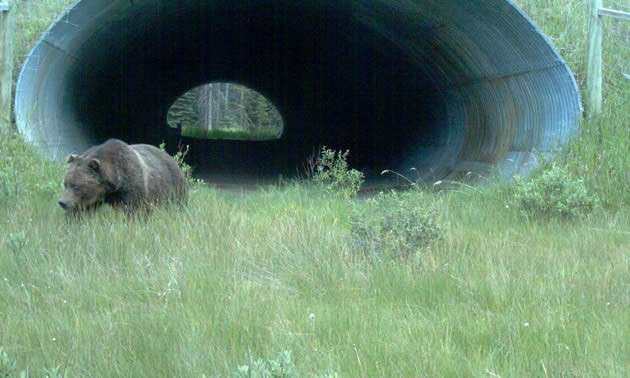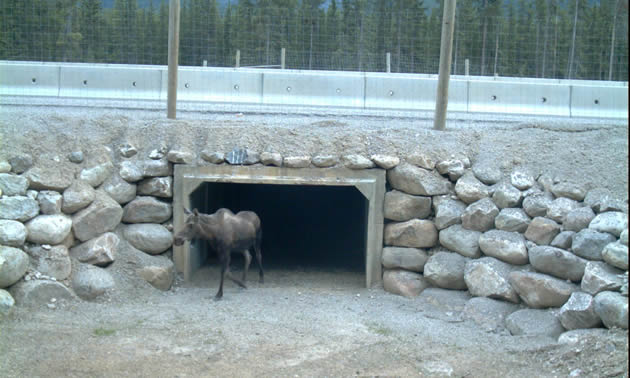Kootenay National Park wants to reduce wildlife collisions
This year, a project in Kootenay National Park will add wildlife fencing and underpasses in order to reduce wildlife collisions
Parks Canada has announced an important project for Kootenay National Park in 2013. The $4.88-million project, funded by the federal government, will see wildlife crossings and fencing added along a stretch of Highway 93 through the park. This is good news for both motorists and wildlife.
Trevor Kinley is a road ecologist and project manager for Parks Canada. He said the issue of wildlife/vehicle collisions in the park is concerning and he believes this project is crucial.
"We have very good wildlife habitat adjacent to Highway 93 in the park, and we have wildlife and cars in close proximity, so historically we have had a very high accident rate," said Kinley. "Over the last decade we have averaged about 50 larger animals a year killed on the highway—and those are just the ones we know about where we find a dead animal. Many more deaths occur, but the animals are not being reported as hit; the animal runs off into the forest and dies, or a female is hit that has dependant young that later dies. It's a very minimal estimate."
How roads restrict wildlife
Roads are also barriers to wildlife searching for food, shelter and mates, according to Kinley. For small animals, the pavement and cleared right-of-way can be insurmountable chasms of unsuitable or dangerous terrain. Even some larger species are deterred by vehicles, human activity, infrastructure, exposure and mortality risk. This is especially critical in Kootenay National Park because there is seasonally important habitat on both sides of the highway, which runs through middle of the park.
So with the wildlife crossings project, Parks Canada is trying to increase visitor safety, grow wildlife populations and increase connectivity for wildlife across the landscape.
A successful model
Kinley said this project on Highway 93 through Kootenay National Park is very similar to the wildlife crossings and fencing that exist in Banff National Park. The crossings on the Trans-Canada Highway through Banff have been used very successfully; monitoring since 1996 shows that fencing has reduced animal accidents by at least 80 per cent, and the underpasses and overpasses have facilitated about 130,000 animal crossings.
"We will be installing eight-foot-high wildlife fencing," said Kinley. "This includes a buried chainlink apron about a metre deep into the ground to keep carnivores from digging under the fence. Then we'll likely put in two wildlife underpasses. The first one will be seven metres high by four metres wide using corrugated steel piping in an oval or elliptical shape. The second one will be a 3.6-metre by 2.4-metre pre-cast concrete box. Both have been used successfully on the Trans-Canada (Highway)."
Defining the details
The $4.88-million project in Kootenay park calls for the installation of the fencing and at least one underpass, but Kinley is hoping that both underpasses can be built. The work will be done near the Dolly Varden day-use area on either side of the highway, since this three-kilometre stretch of road has the highest rate of wildlife/vehicle collisions. Kinley said that along this section, the ground is easy to work on because it is fairly flat and doesn't have a lot of exposed bedrock.
The project is slated to start this spring or early summer. Parks Canada is putting out tenders now and the work should be completed by the fall.
"This project will ensure the highway is safer for people travelling through the park," said Kinley. "About 10 per cent of collisions happen in that three-kilometre stretch—it's a bad spot. We also hope to increase the wildlife population. Kootenay National Park has become a destination wildlife-viewing area, so if we reduce the roadkill rate, we expect to increase populations so people will have a chance to see them."
Kinley advises anyone driving through the park to drive with caution, obey wildlife warning signs and most importantly, keep to the speed limit; following these driving practices reduces the chances of having a collision with wildlife.








Comments